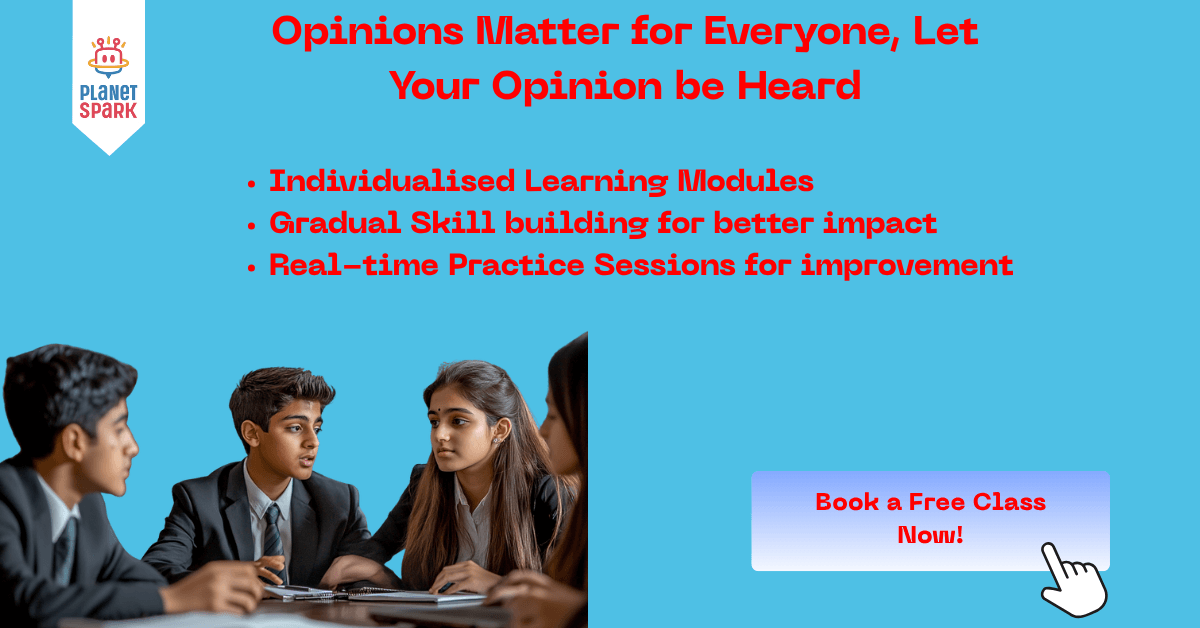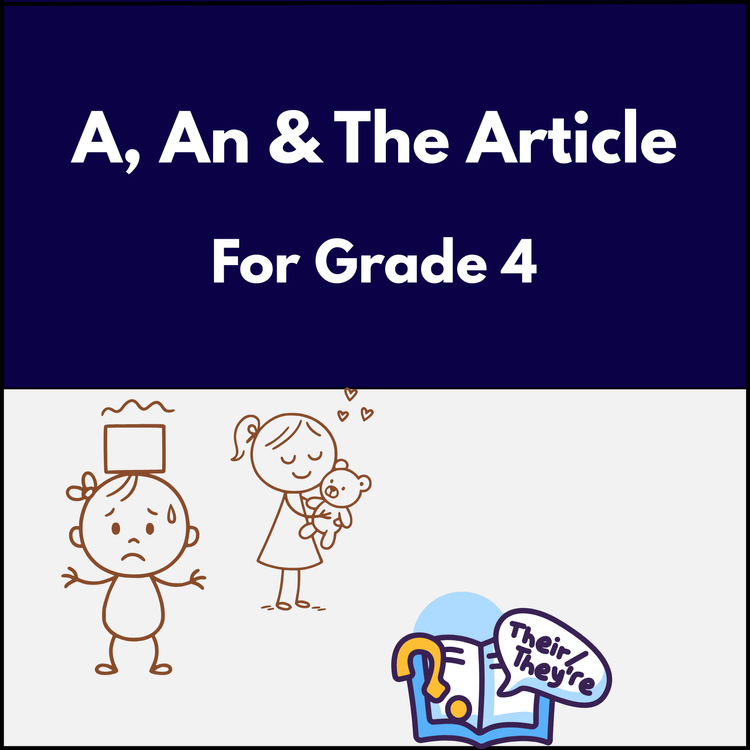How to Start a Debate. Best opening lines & examples for students
Last Updated At: 1 Dec 2025
9 min read

Table of Contents
- What Is a Debate?
- Sample Debate Starters by Topic
- Top 5 School Debate Topics with Sample Opening Arguments (Af
- Structure of a Debate
- How to Start a Debate Speech
- Useful Sentence Starters for Debate (Grouped by Function)
- How to Prepare for a Debate
- Body Language Tips for Debating
- Voice Tips for Debating
- How to Handle Counterarguments
- Debate Practice Activities for Kids
- Why Choose PlanetSpark to Build Debate & Public Speaking Ski
- FAQs on How to Start a Debate
Debating is an exciting way for kids to express ideas, develop confidence, and strengthen communication skills. But many children (and even adults!) find it hard to know where to start. In this blog, we’ll walk through everything young learners need to begin a debate, from understanding the structure to delivering strong opening lines.
Whether your child is new to debating or wants to level up their speaking skills, this guide will help. It also offers useful sentence starters, body language tips, and preparation strategies aligned with real-world success, and features how PlanetSpark’s public speaking courses can support every stage of the journey.
What Is a Debate?
A debate is a formal discussion between two sides: one supporting a particular idea or topic (called the “affirmative” or “pro” side) and the other opposing it (the “negative” or “con” side). Each side presents arguments and evidence to convince the audience or judges of their viewpoint.
In school debates, topics can range from current events to hypothetical scenarios. Example: “Should homework be banned in schools?”
The goal is not just to win but to express opinions clearly, back them with logic, and respond to others respectfully.
Sample Debate Starters by Topic
Let’s look at how to begin specific types of debates:
1. Topic: “School uniforms should be mandatory.”
- "Good morning, everyone. I stand in favor of the motion that school uniforms should be mandatory. Uniforms bring discipline and equality to the classroom."
2. Topic: “Social media does more harm than good.”
- "Respected judges, today I oppose the motion. Social media, when used wisely, connects people, shares knowledge, and builds global communities."
3. Topic: “Should homework be banned?”
- "I strongly believe homework should not be banned. It reinforces classroom learning and builds time management skills."
PlanetSpark Tip: With weekly debate topics and feedback loops, PlanetSpark students practice real-world issues in a supportive environment.
Top 5 School Debate Topics with Sample Opening Arguments (Affirmative & Negative)
1. Topic: Should Homework Be Banned in Schools?
Affirmative Opening:
“Good morning, everyone. Imagine a world where children learn at school and spend their evenings discovering passions, bonding with family, or exploring nature. I firmly believe homework should be banned because it adds unnecessary stress, limits personal development, and does not significantly improve academic performance.”
Negative Opening:
“Respected judges and fellow debaters, education doesn’t stop when the bell rings. I strongly oppose banning homework because it reinforces classroom learning, builds discipline, and encourages responsibility in students.”
2. Topic: Should Social Media Be Restricted for Kids Under 16?
Affirmative Opening:
“Ladies and gentlemen, social media may seem harmless, but for children under 16, it’s a world full of unrealistic standards, distractions, and dangers. I support strict restrictions on social media for young kids to protect their mental health and focus on real-life development.”
Negative Opening:
“While concerns about online safety are valid, banning social media isn’t the answer. I stand against restricting it because when used responsibly, it promotes creativity, connection, and learning, skills essential in today’s digital age.”
3. Topic: Should Junk Food Be Banned in School Canteens?
Affirmative Opening:
“Good morning, everyone. Our schools should nourish both the minds and bodies of students. I believe junk food must be banned in school canteens to promote healthier habits and prevent long-term health issues like obesity and diabetes.”
Negative Opening:
“Respected panel, banning junk food might sound like a good idea, but it’s not practical. I oppose this motion because moderation, not elimination, is the key. Educating students about healthy choices is far more effective than enforcing bans.”
4. Topic: Should Students Wear School Uniforms?
Affirmative Opening:
“Uniforms are more than just clothes; they represent equality, discipline, and unity. I strongly support school uniforms because they eliminate social barriers and allow students to focus on learning rather than fashion.”
Negative Opening:
“Thank you for the opportunity to speak. While uniforms promote uniformity, they suppress individuality and self-expression. I oppose this motion because students should be free to express themselves through their clothing choices.”

5. Topic: Is Online Learning Better Than Classroom Learning?
Affirmative Opening:
“In a rapidly advancing world, flexibility and access matter more than ever. I support the idea that online learning is better than classroom learning because it offers personalized pacing, global access to knowledge, and prepares students for tech-driven futures.”
Negative Opening:
“No screen can replace the presence of a teacher and the energy of a classroom. I oppose this motion because in-person learning fosters real interaction, emotional development, and collaboration that online platforms simply can’t replicate.”
Structure of a Debate
Understanding the basic structure is the first step in learning how to start a debate. A traditional debate format includes:
1. Opening Statement
Each team introduces its stance on the topic.
2. Constructive Arguments
Participants present their main points and supporting evidence.
3. Rebuttals
Teams respond to the opposing side's arguments, pointing out flaws or weaknesses.
4. Closing Statements
Final summary of key points, with a strong call to action or persuasive conclusion.
Want Your Child to Shine in Speeches and Debates? Begin with a Free Class.
How to Start a Debate Speech
The beginning of your speech is crucial. A strong start captures attention and sets the tone. Here’s how to start effectively:
1. Greet the audience
Start by addressing your teacher, judge, or audience politely. For example:
- "Good morning, respected judges, teachers, and fellow students."
2. Introduce yourself and your position
Clearly state your name and whether you are speaking for or against the motion.
- "I am [Your Name], and today, I stand in favor of the motion..."
- "I am [Your Name], and I will be speaking against the motion..."
3. State the topic
Say the topic or motion of the debate.
- "The motion for today’s debate is: ‘Should mobile phones be allowed in schools?’"
4. Provide a hook or an engaging opening
Use a fact, question, or short story to grab attention.
- "Did you know that over 80% of students use phones during class time, often for non-educational purposes?"
- "Imagine a classroom where every child is glued to their screen instead of listening to the teacher."
PlanetSpark Tip: Our public speaking classes train kids to master this attention-grabbing opening by practicing storytelling, voice modulation, and clear argument building.
Useful Sentence Starters for Debate (Grouped by Function)
To make your speech smoother and more powerful, use sentence starters that signal your ideas clearly.
A. For Introducing Your Argument:
- "Firstly, I would like to point out..."
- "My first argument is..."
- "To begin with..."
B. For Providing Evidence:
- "According to recent studies..."
- "Research suggests that..."
- "For example..."
C. For Contradicting the Opponent:
- "I respectfully disagree with my opponent because..."
- "While my opponent makes a valid point, I believe..."
- "It is important to note that..."
D. For Summarizing:
- "In conclusion..."
- "To summarize my main points..."
- "Therefore, I strongly believe..."
PlanetSpark Tip: In our live practice debates, students receive instant feedback on their phrasing and delivery, making sentence transitions smoother and more persuasive.
Give Your Child the Confidence to Speak, Free Class Available Now!
How to Prepare for a Debate
Preparation is key. Here are steps to help children feel confident:
1. Understand the Topic
Break the topic down into key terms. What does each word mean? What are the boundaries?
2. Research Both Sides
Even if you're arguing one side, understand both. This helps you respond to counterpoints effectively.
3. Create a Structure
A debate speech generally includes:
- Introduction
- Three Main Arguments
- Counterarguments
- Conclusion
4. Practice Delivery
Rehearse speaking aloud, timing each section, and making eye contact. Record and review yourself or practice in front of family.
PlanetSpark Tip: Our AI-based feedback tools provide real-time speech analysis so kids can improve fluency, voice modulation, and clarity.
Body Language Tips for Debating
- Posture: Stand straight with your shoulders back.
- Eye Contact: Look at your audience, not the floor or ceiling.
- Gestures: Use your hands naturally to emphasize points.
- Facial Expression: Show energy and enthusiasm, especially during the introduction and conclusion.
PlanetSpark Tip: Our courses feature mirror and camera-based speaking drills that boost body awareness and expression.
Voice Tips for Debating
Your voice helps carry your message:
- Clarity: Speak each word.
- Pace: Don’t rush. Pause between ideas.
- Volume: Loud enough to be heard, but not shouting.
- Emotion: Let your passion show in your voice!
How to Handle Counterarguments
Debating isn’t just about presenting your views, it’s about responding to the other side. Here’s how to handle rebuttals:
- Listen carefully to what the other speaker is saying.
- Take notes if possible.
- Respond calmly, not emotionally.
- Use phrases like:
- "While that may be true, it does not consider..."
- "I would like to counter that by saying..."
- "However, the evidence shows..."
PlanetSpark Tip: Our group discussion and rebuttal rounds help kids develop quick thinking and respectful disagreement skills.
Debate Practice Activities for Kids
- Role Play: Assign different sides and have mock debates at home.
- Topic Jar: Pick random debate topics from a jar and take turns speaking.
- Two-Minute Challenge: Practice giving a two-minute speech on any topic using sentence starters.
PlanetSpark Tip: PlanetSpark offers daily speaking challenges and practice sessions that improve debate readiness in a fun, gamified way.
Why Choose PlanetSpark to Build Debate & Public Speaking Skills?
PlanetSpark’s Public Speaking Course is designed specifically for kids aged 4–16, with personalized mentorship, gamified lessons, and live debates. Features include:
- Live, interactive sessions with expert trainers
- Debate practice rooms with peer feedback
- AI Fluency Reports for instant improvement tips
- Confidence-building modules including TED-style speeches
With PlanetSpark, children not only learn how to start a debate but also how to finish it powerfully.
FAQs on How to Start a Debate
1. What is the best way to start a debate speech?
Start with a greeting, introduce yourself and your stance, state the topic, and use a strong hook to grab attention.
2. What are some sentence starters I can use in a debate?
Use phrases like "Firstly, I would like to point out...", "According to research...", and "I respectfully disagree..." to build structure and flow.
3. How can I practice debating at home?
Try mock debates, role-play with family, or use debate topic cards. PlanetSpark also offers online platforms for regular debate practice.
4. What makes a good debater?
A good debater listens well, structures their thoughts, uses strong evidence, and maintains calm body language and voice tone.
5. Can PlanetSpark help improve debate skills?
Yes. PlanetSpark’s public speaking courses provide expert guidance, live practice, and feedback tools tailored to develop confident debaters from a young age.
Let your child discover their voice and develop leadership through confident speech. Start with a PlanetSpark free trial class today!
Download Free Worksheets
Personalized Communication Report
Record a video to get a AI generated personalized communication report for your child
Select Learner's Class

Hi There, want to try these
tips for your child with
LIVE with our expert coach?
Let's check your child's
English fluency

